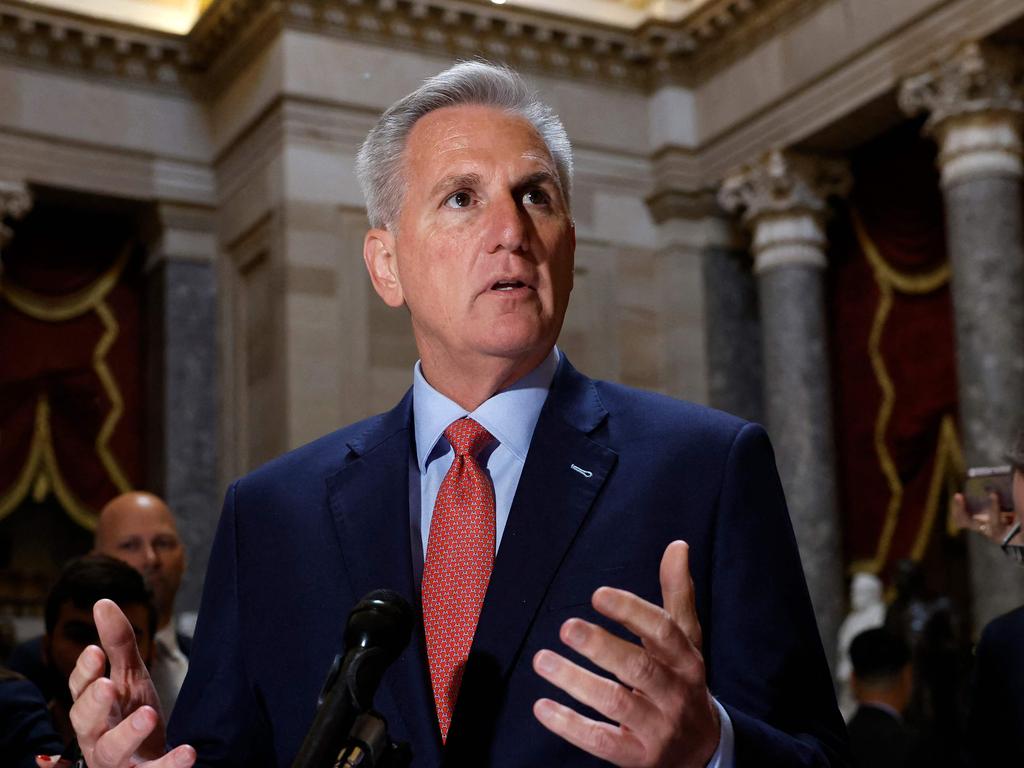America’s government is running on fumes as danger of historic default grows
Within a week the US could be in an historic national debt default, likely triggering a shares fall and a jump in short-term rates. But the sky wouldn’t fall in.

By this time next week the US government could well be in default, for the first time in its history apart from a brief, technical default in 1979 and Franklin Roosevelt’s arbitrary devaluation of the dollar in terms of gold in 1934.
JP Morgan economist Michael Feroli on Wednesday put the probability of a technical default at around 25 per cent.
It would be much higher now: members and senators have returned to their districts for the Memorial Day long weekend, not to return until next week, and there’s no scope for remote voting.
Even if the two parties reach a deal early next week, House of Representative rules require bills to sit for 72 hours before they are voted upon. That would bring any debt ceiling increase to around June 1, next Thursday, which is the deadline Treasury Secretary Janet Yellen has been warning about for weeks.
And then the leaders of both parties need to herd their left and right flanks, respectively, who don’t want any compromise.
On Wednesday evening this week, the US Treasury had only $US49.5bn ($76bn) on hand, the lowest level this year, and a piddling sum for a government that’s planning to spend US$6.4 trillion over the 12 months to the end of September.
Washington is running on fumes, and the unpredictable and lumpy nature of government receipts and expenditures could mean the Treasury defaults even before June 1.
Any technical default would trigger a media maelstrom, but economic Armageddon isn’t on the cards, despite the daily histrionics.
It’s in the interest of the administration, and the banking system, to try to scare the public and congress in order to convince politicians to reach a deal.

To be sure, a default would tarnish US prestige, and almost certainly trigger a drop in share prices and a sudden jump in short-term interest rates. But the sky wouldn’t fall in. For what it’s worth I’d see a buying opportunity.
Those owed money would eventually be repaid, with interest. It would be a question only of delay. It would be a political default, not an Argentina-style economic one.
Russia, albeit with significantly less outstanding debt, defaulted earlier this for political reasons – it had been shut out of the SWIFT international payments system – and the global economy barely noticed.
The Biden administration and the congressional Democrats may have to make tough decisions next week: pay Americans their social security and welfare, or pay bondholders, much of them foreign, their coupon payments. Ms Yellen hasn’t said which group would be first in line.
Who’s in the right? Both parties are as much to blame for the debt quagmire. As Hillary Clinton rightly noted earlier this week Donald Trump’s administration was responsible for a full quarter of the $US31.4 trillion in outstanding debt, owing to the massive deficits incurred during the Covid-19 pandemic.
In fact, historically Democrat administrations have been more fiscally prudent than Republicans.
But whoever has been at fault, Republicans are right to stress spending cuts. Even with a record low jobless rate of 3.5 per cent the US is nursing a $US1.5 trillion budget deficit. US tax revenues as a share of GDP are above 20 per cent, a figure they have only surpassed in 1944 and 2000.
Republicans want the US government to return spending to 2022 levels, ahead of a 1 per cent increase thereafter, except for defence spending, which hardly seems crazy.
They are likely to get most of what they want. The presidential election is approaching, and unlike in 2011 and 2013, when Americans blamed Tea Party Republicans for bringing the Obama administration to the brink of default, more than 60 per cent of Americans want to see Democrats agree to spending cuts, according to poll after poll.
It’s all about the blame game, and who gets it in the event of a default.
Republican Speaker Kevin McCarthy has the whip hand. His personal standing has risen considerably since he got the job after weeks of intra-party negotiations, according to most polls, while President Joe Biden’s doddery presentations have undermined his public standing.
Indeed, Democrats could have lifted the debt ceiling when they controlled both chambers last year, but they didn’t. It’s almost as if the system hankers for periodic confrontations.

In Australia and other nations with Westminster systems, the government, ensconced in the parliament, can quickly pass laws to avoid any such debt ceiling crisis.
It’s not so easy in the US, where inertia is the rule of the day.
Mr Biden might yet decide to ignore congress and keep borrowing anyway, resorting to the 14th amendment of the constitution, whose lengthy paragraphs include the words “the validity of the public debt of the United States … shall not be questioned”. That would trigger a constitutional crisis, especially given the conservative Supreme Court would likely disapprove.
Buckle up for a wild could of weeks.






To join the conversation, please log in. Don't have an account? Register
Join the conversation, you are commenting as Logout